Title : How To Build An Ecommerce Marketing Strategy That Converts
link : How To Build An Ecommerce Marketing Strategy That Converts
How To Build An Ecommerce Marketing Strategy That Converts

Over emphasis on buyers at the bottom of the sales funnel has led marketers to neglect content marketing for ecommerce. They ignore the pool of prospects who are in the research and education phases of the buying process.
Ecommerce marketers should learn from the retailers of years gone by: content marketing works. It has been convincing consumers to buy since long before our grandparents were born.

One of the early pioneers of content marketing was Jell-O, who started running content marketing campaigns (focused around their recipe books) in the early 1900’s.
Here’s a list article that Jell-O published in the Ladies’ Home Journal in 1934, with a call to action for a free recipe book:
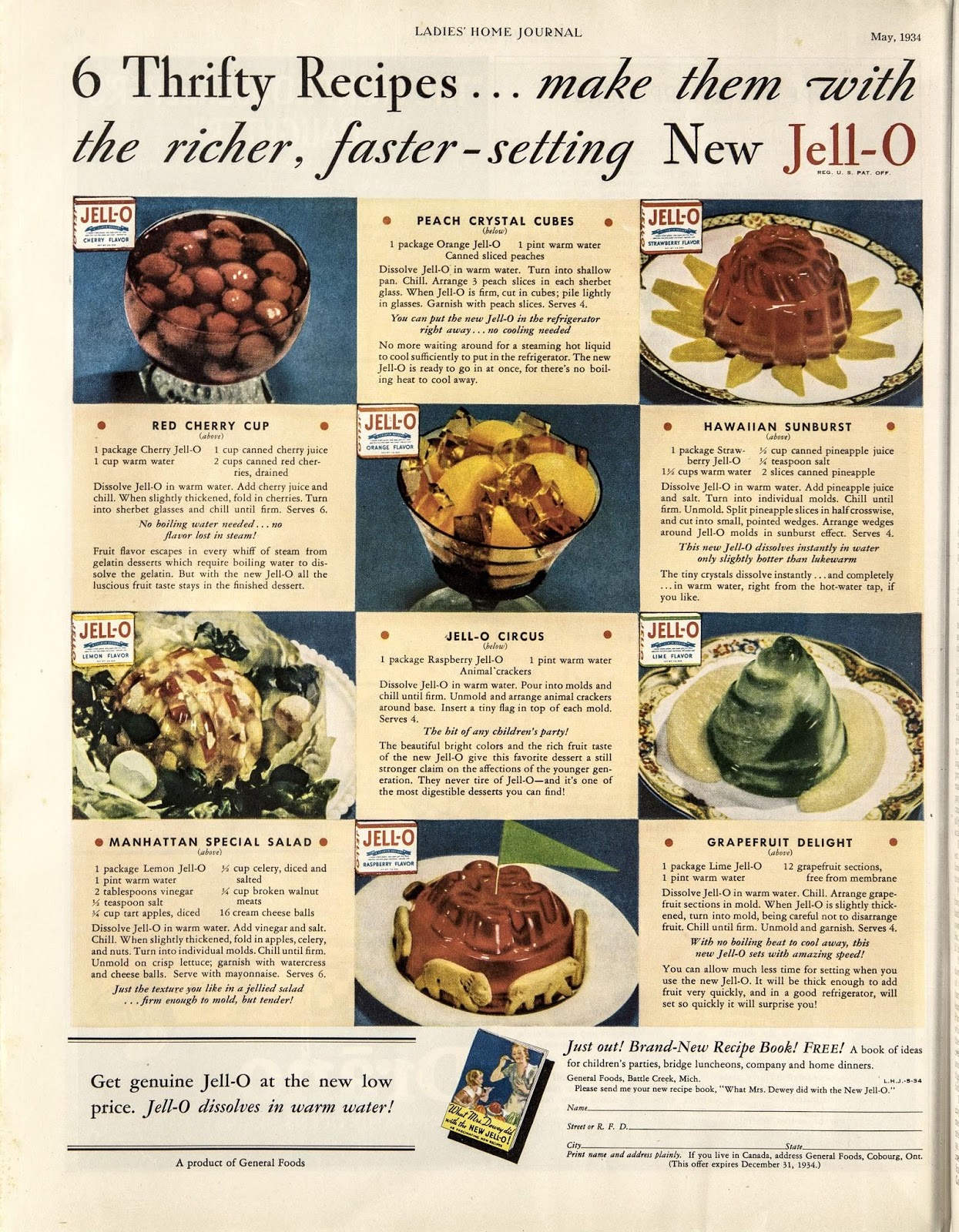 As the saying goes, there’s nothing new under the sun.
As the saying goes, there’s nothing new under the sun.
We have clickbait, conversion funnels, and lead magnets. But our great-grandmarketers were writing list posts with CTAs for free books a century before it was cool! Their strategy included content marketing for ecommerce success.
[clickToTweet tweet=”Content marketing in ecommerce allows us to reach and build relationships with a much larger audience.” quote=”Why is content marketing great for ecommerce? It allows us to reach and build relationships with a much larger audience.”]
Four things to expect from content marketing for ecommerce:
- Attracts customers that are earlier in the buying process
- Educates and guides customers towards a buying decision
- Builds a deeper relationship with customers and prospects
- Creates positive brand appeal with target audiences
Let’s dig into some data to see what types of content marketing work best for ecommerce sites…
See The Most Viral Ebooks and Guides at BuzzSumo
What Makes Content Marketing For Ecommerce Go Viral? Data, Please!
Over the years, I’ve worked on quite a few content marketing campaigns for ecommerce. It’s critical for blog posts to be hosted on https sites, as Google’s warning that a site isn’t secure will driver readers away.
It’s also important to think about what types of content work best. But for this article, I dug into BuzzSumo’s data to learn which types of content drive the most buzz for ecommerce sites. Here’s what I did:
- Identified 12 top ecommerce websites that are actively using content marketing.
- Identified the 100 most-shared content pieces across all 12 sites during the past year.
- Reviewed each content piece and manually classified it according to several characteristics.
- Analyzed the content pieces to identify trends using Excel and PowerBI.
Here’s what I found!
Don’t expect 50 gazillion shares
Even though I was analyzing content pieces from big, well-known brands, none of them had massive viral success. This shouldn’t be surprising, as the BuzzSumo Content Trends 2018 report showed that on average social shares are down by 50%.
Here are the social share metrics for the 100 pieces I analyzed:
- The average piece had 8,064 shares.
- The highest piece had 72,829 shares.
- The lowest piece had 2,891 shares.
Content for ecommerce doesn’t always have to be long
In some industries (such as B2B) super long content (e.g. 2,000+ words) gets the most social shares. That trend may not hold true for ecommerce, though:
- The average length of the top 100 content pieces was just 945 words.
- Only 12 of the pieces were over 2,000 words long.
- Pieces over 1,000 words long had an average of 6,774 social shares.
- Pieces under 1,000 words averaged 9,029 social shares.
Sometimes, shorter content can be better!
Enter Your Topic In BuzzSumo To Find The Best Content Length
Multimedia is important
Nearly all of the top 100 posts included multimedia, and 59% of the pieces were multimedia-driven (meaning that photos, video, or graphics were at the core of what the piece was).
Use your ecommerce content marketing to connect with a cause
While analyzing the pieces, I noticed that 43% of the content pieces were related to a cause that readers might feel a close connection to, passion for, or identify with. For example:
- Content ranking the best cities/states for X (people love to brag about where they’re from).
- Posts covering topics around social issues such as inclusivity, education, child welfare, etc.
- Content that’s directly connected to specific interest-based communities (runners, star wars fans, etc.).
This shouldn’t be surprising: readers often share pieces they have an emotional reaction to.
What 88% of the content marketing for ecommerce pieces had
Nearly 90 of the of the 100 content pieces had at least one of these three characteristics:
- Multimedia driven
- Connected to a cause
- Timely (connected to a current news story, holiday, or event)
10 Examples Of Great Content Marketing For Ecommerce Stores
How can ecommerce stores use these ideas to create successful content? Here are 10 of the best content pieces from the 100 I analyzed – hopefully, some of these will trigger ideas that you can use in your own marketing campaigns!
List articles
Love them or hate them, listicles still work! Thirty \of the top 100 ecommerce content pieces were lists, making them the most common content type we found.
Don’t build a run-of-the mill list article. The internet doesn’t need more of those. Create a list article that connects with a cause or event your audience cares about and skillfully uses on multimedia. Here’s a great example from Expedia:
29 epic places to witness the 2017 solar eclipse
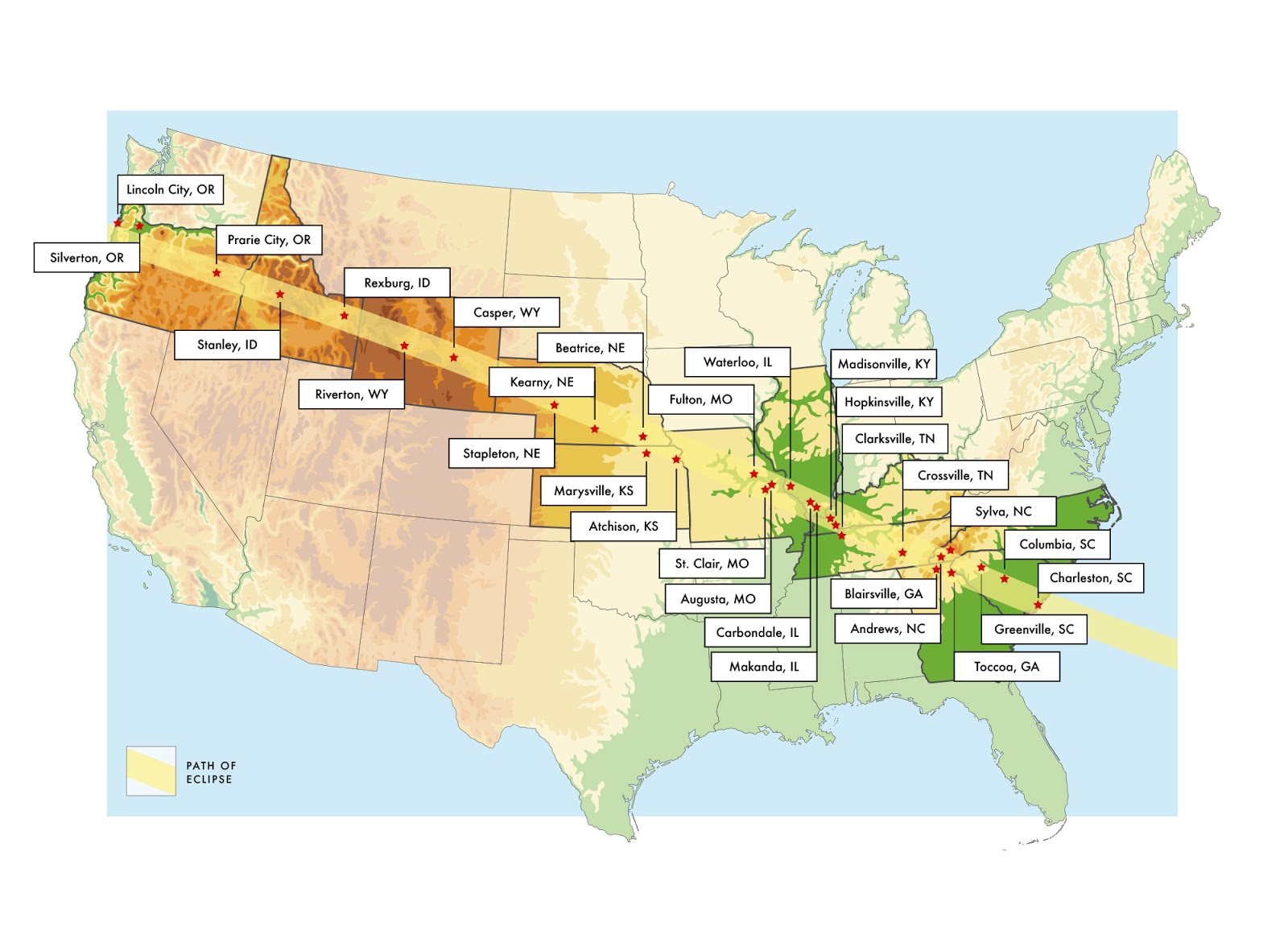
Cause-based content
One of the original research studies on content and social media sharing showed that certain emotions (awe, anger, etc.) trigger social sharing. That’s still true today, and connecting with a cause the reader is passionate about is a proven way to encourage social sharing. Here’s a great example from REI, where they connected with a cause their readers are very passionate about – cost and access to National Parks:
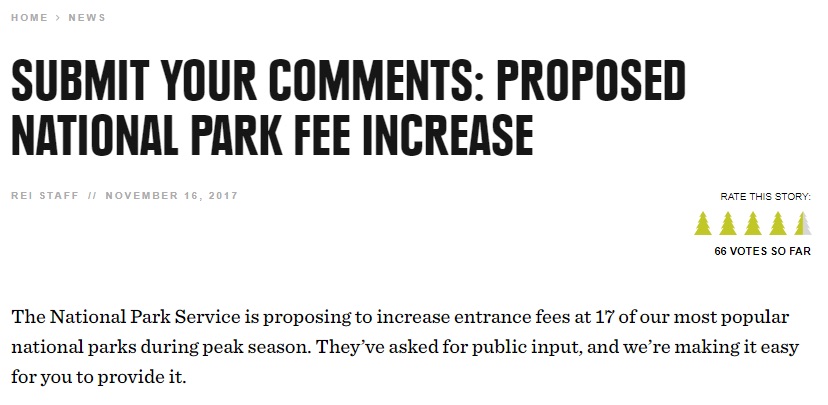
This piece triggered social shares and passionate endorsements across social media:
Photography-driven content
They say a picture is worth a thousand words. When it comes to social sharing, that’s certainly true! And you don’t have to be selling Hawaiian vacation packages to create great content with your photographs. Home Depot publishes some great photography-based how to content. The photos not only make the content piece visually attractive and highly professional, they make the directions a lot easier to follow. Here’s one they published on “The Easy Way To Paint A House”:
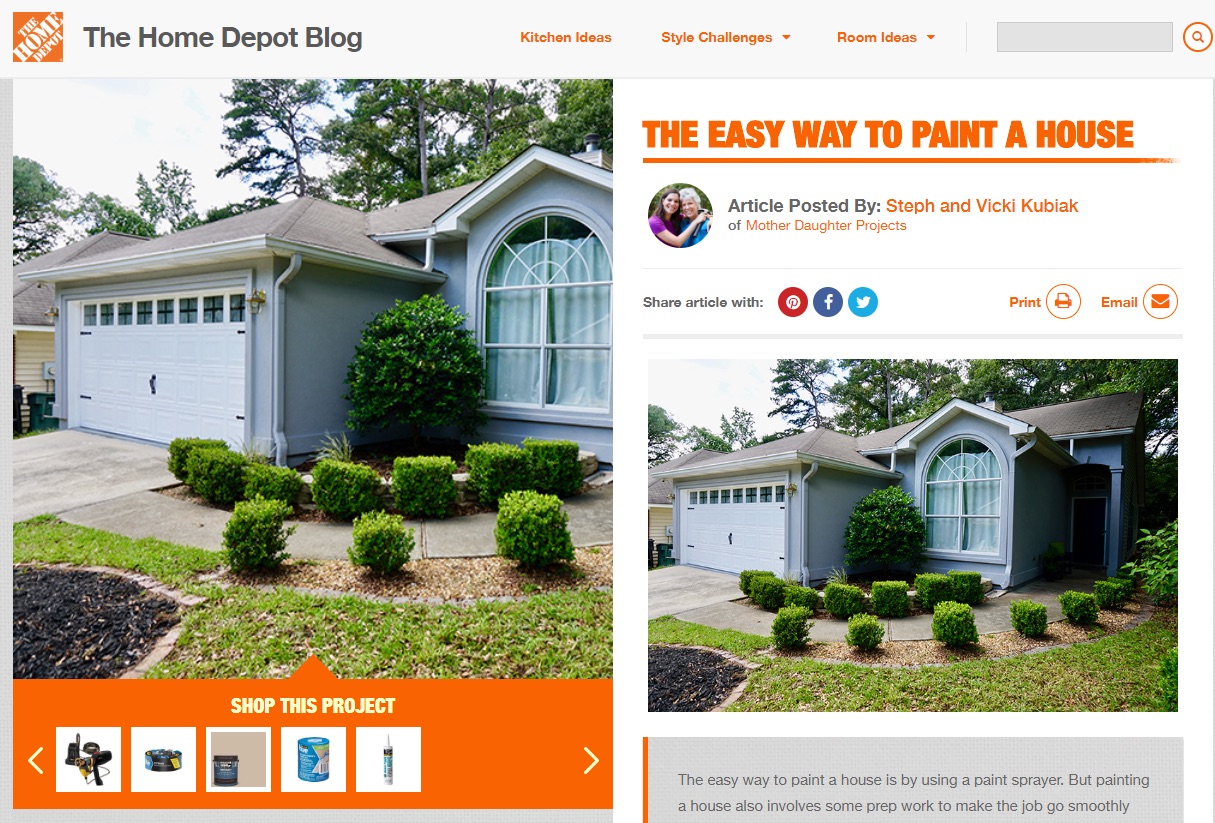
Realtors, DIYers, and other readers shared the post over 3,200 times.
Interactive content
People love apps. People love content that “does” something. Making your content truly interactive can increase your “cool factor” and increases the perceived value your content provides. In other words, it encourages readers to share your content. Several interactive pieces showed up on our top 100 list – REI’s All Out Blue Ridge was the one that caught my eye. It included multiple interactive tools such as this mountain bike trail finder:
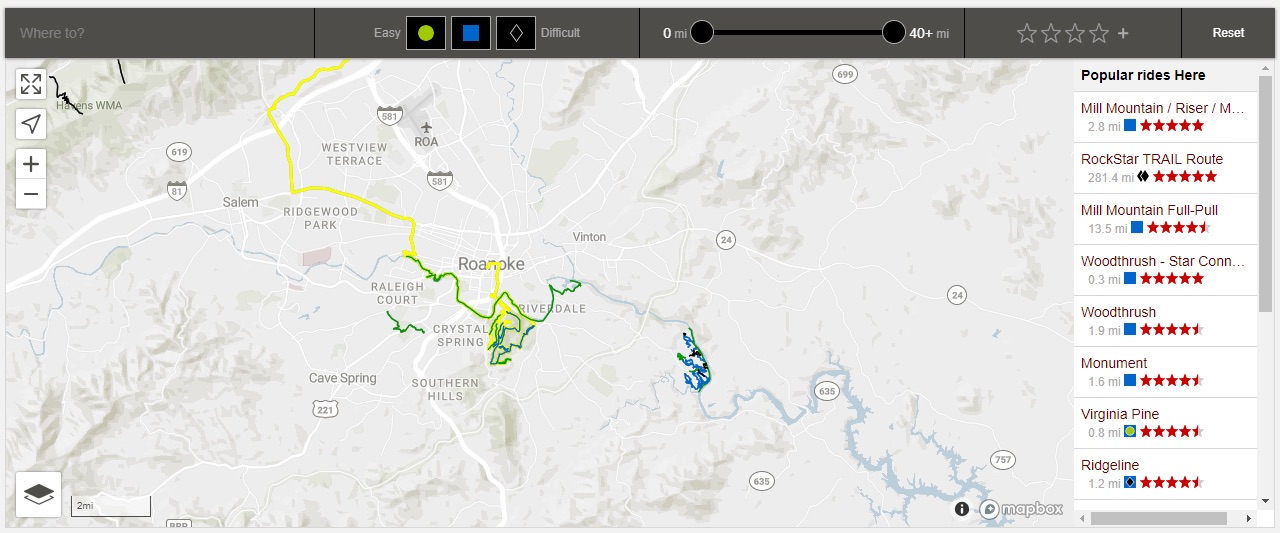
Individuals and organizations passionate about the outdoors shared this resource far and wide:
Quizzes
A few years ago, quizzes became the dandelions of the internet, popping up everywhere. They still work, especially if they are well done. Here’s a successful example from StitchFix, the personal style finder:
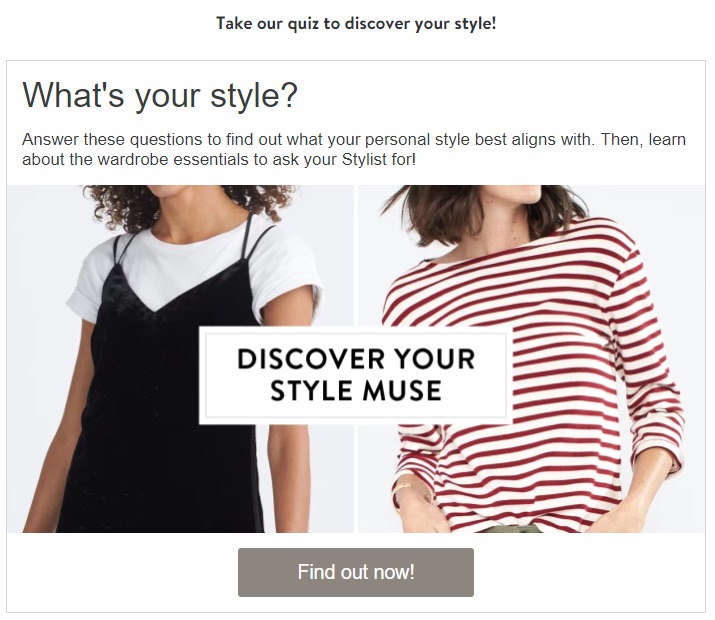
Giveaways & Contests
People love free stuff. Always have, and probably always will. Giving away free stuff (especially when the contest rules reward social sharing) is a great way for marketers to create buzz. A great example of this tactic was the Fly Me Home giveaway from Orbitz:

How-To
Teaching your readers how to do something with your products can be a great way to guide them toward a purchase without explicitly selling. The key is to build a super-valuable guide that walks the reader through each step of the process (use photos!). Here’s a fun example from Home Depot, Hosting a Spooky Halloween Dinner Party at Spider Temple. This piece includes 40+ photos showing in detail how to do each step of the process.
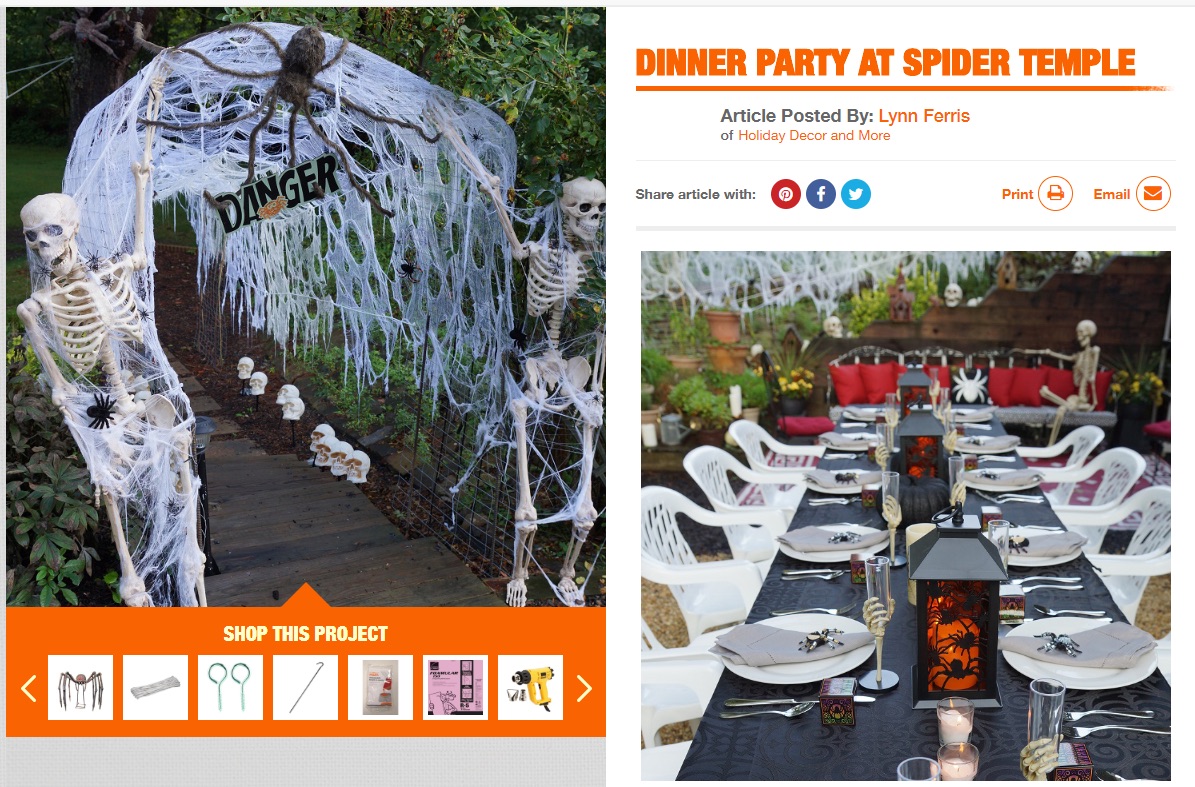
Product Deep Dives
Especially in technical areas (such as computers or photography) your audience may really appreciate product unveils and technical details from a subject matter expert. While this type of content marketing for ecommerce may sound boring, if done correctly it can drive a lot of social shares and traffic. Here’s an example from B&H Photo – an expert panel discussion on the new Nikon D850:
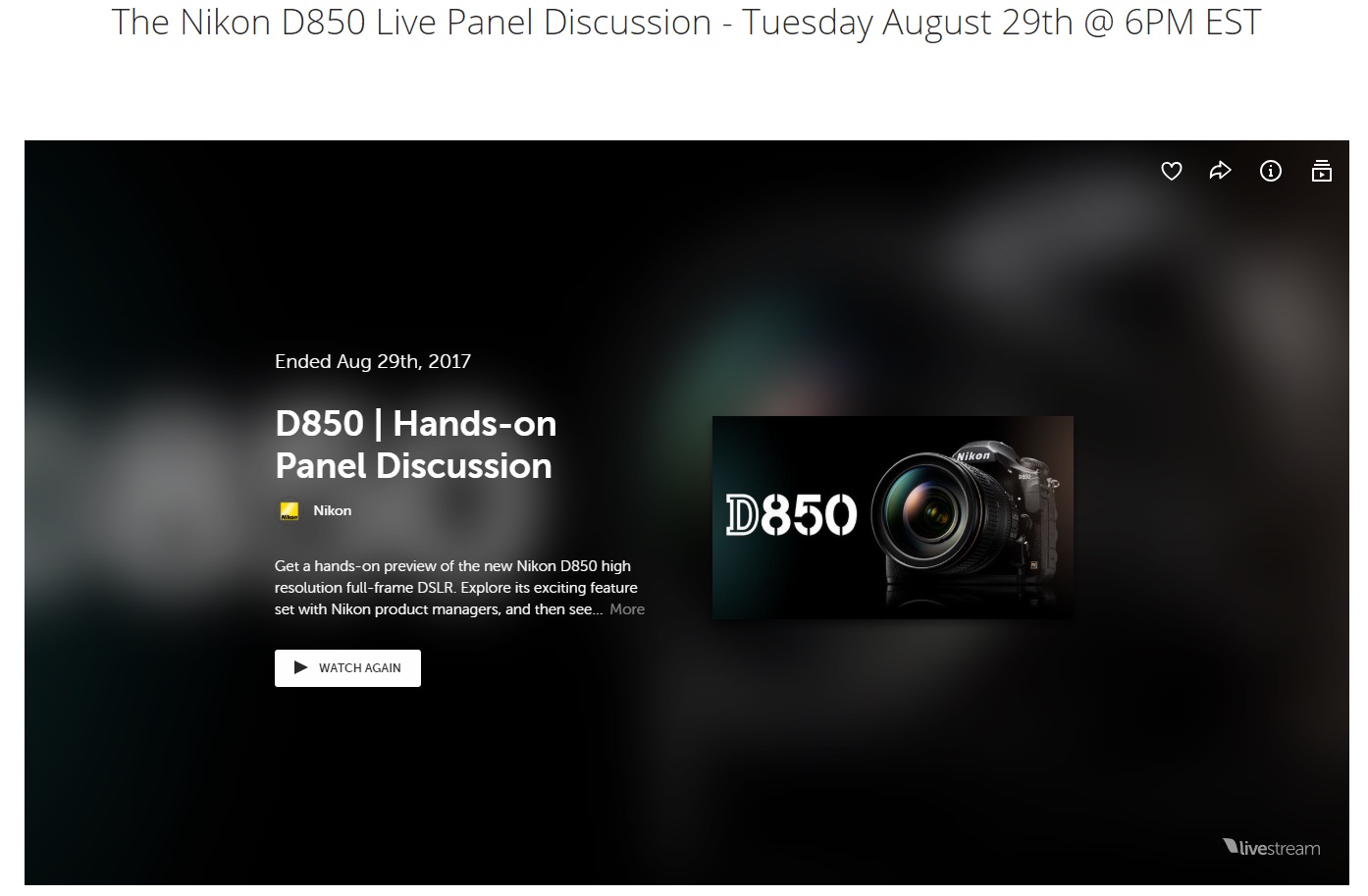
Photogs around the world shared the event in anticipation:
Stories; Interviews
One the oldest forms of communication, storytelling connects with readers and elicits social shares, links, traffic, and publicity. This is one of the most personal and human content types on the list. Based on what we know about the connection between emotional responses and social sharing, it shouldn’t come as a surprise that personal stories can drive a lot of social shares. Here’s a great example from REI:
The Guardian of Hope Pass: “For 30 years, Vicky Foster and her llamas have hauled beer, ramen and medical supplies to the highest aid station of the Leadville 100 ultramarathon. This year marks their final race.”

Shareable Products
Sometimes the best content marketing for ecommerce is the product itself. Some online stores (*cough* ThinkGeek *cough*) have an unfair advantage in this arena, but nearly any ecommerce site can add unique products that fans will share. Even the most boring products can be customized to create a unique, shareable product. One of the top 100 pieces we analyzed was from Home Depot. Lumber, pipes and drills, all pretty boring stuff, right? Home Depot is selling a few cool products among the boring, though – including a set of Star Wars Stormtrooper Robotic Vacuum Cleaners. The category page for these products has been shared thousands of times on social media.

Promotion
Many conversations about top content pieces leave out one critical detail for success – promotion (a.k.a. amplification). Large brands like the ones we analyzed have an unfair advantage – they’ve already got a large audience that can share the piece and start the viral growth. If you’re doing content marketing for a smaller company, you may need to work harder to get the ball rolling. Here are a few ideas to get your content in front of more people:
- Send to your email list
- Post to social media profiles
- Post on Reddit (be careful, don’t get banned!)
- Boost your Facebook posts
- Run Facebook ads
- Amplify using Outbrain or other native ad networks
- Write guest blog posts
- Work with an influencer or other partner. More authors = more shares.
Conclusion
Content marketing can be a powerful tactic for ecommerce stores – it’s been a proven retail marketing strategy for over a century. What content marketing tactics have you found successful?
Thus Article How To Build An Ecommerce Marketing Strategy That Converts
You now read the article How To Build An Ecommerce Marketing Strategy That Converts with the link address http://thevisitbrazil2014.blogspot.com/2023/05/how-to-build-ecommerce-marketing.html
0 Response to "How To Build An Ecommerce Marketing Strategy That Converts"
Posting Komentar